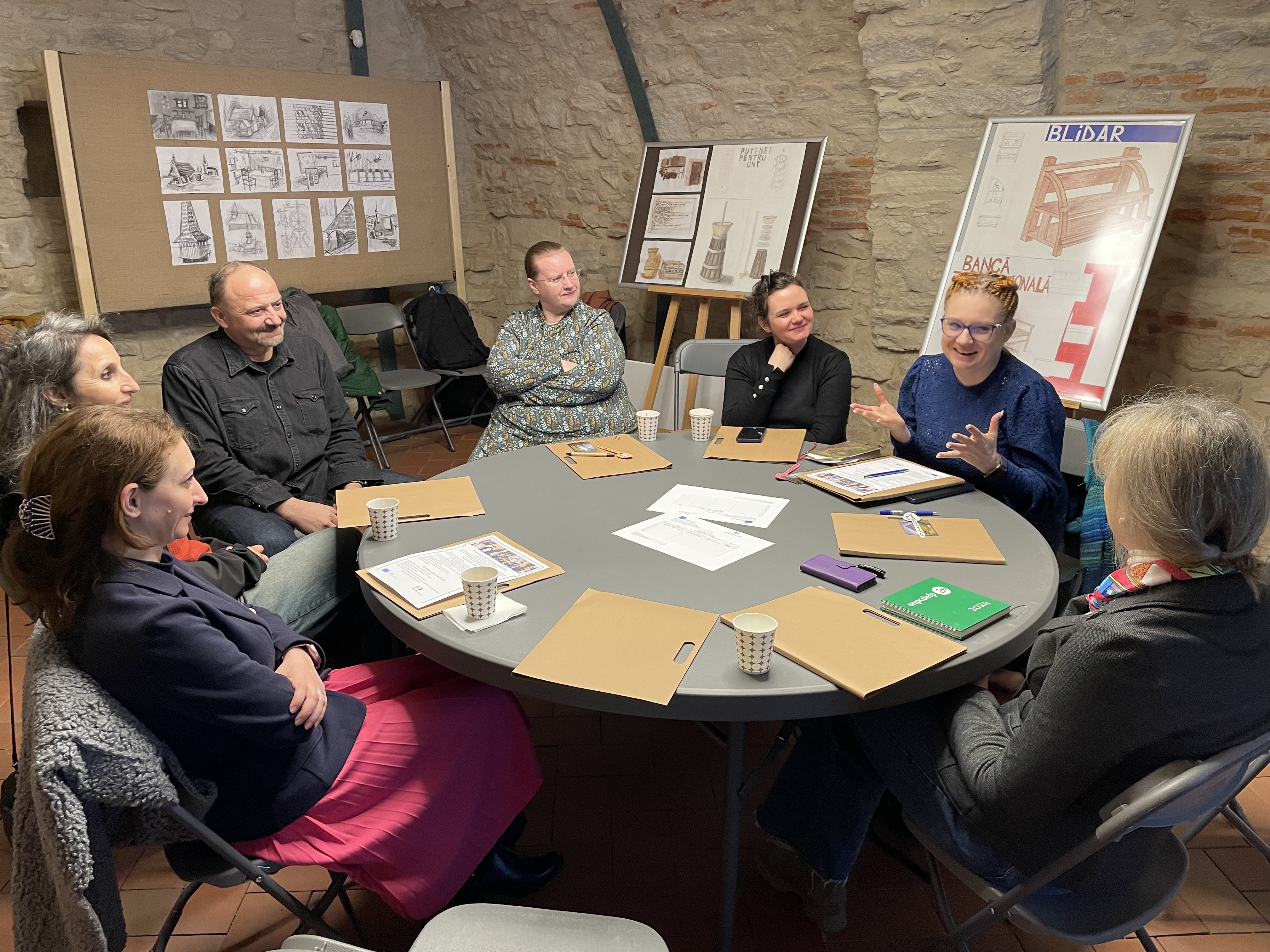
Pillot team gets together in the Transylvanian Museum of Ethnography
The Pillot project team got to meet up again, this time in Cluj, the Transylvanian metropolis in Romania. The project meeting was held on the 17th and 18th of April, and was hosted by the local partner - the Transylvanian Museum of Ethnography.
The key aim of the meeting was to discuss, and select a final set of activities intended to be used in cultural and language education of people of migrant and refugee backgrounds.
The event was launched by the local coordinator Andreea Iasko, and the museum director Tudor Sălăgean, who introduced us to the museum´s activities and scope of work, both towards the general public and researchers. All partners then shared their own area of practice with implementing educational activities for learners with migrant and refugee backgrounds.
The Pillot team also got acquainted with the current exhibition of the museum, and subsequently visited an open-air venue of the museum, where multiple activities for Ukrainian refugees take place. Here, the members of the Pillot project had the opportunity to learn about the cultural heritage of the Transylvanian region, and find out more about the peasant culture combining traditional and modern modalities.
The Pillot team also got acquainted with the current exhibition of the museum, and subsequently visited an open-air venue of the museum, where multiple activities for Ukrainian refugees take place.
Most of the agenda time was devoted to the discussion of the ongoing creation of “Repertoire of language education approaches in the European context”. Under the guidance of the coordinator Katarzyna Žák-Caplot during the days together in Cluj, we selected activities that we will put into practice with our learners in all 5 partner countries in the upcoming months.
During the preceding collection and preparatory phase, the Pillot team designed and collected over 70 activity drafts, with the contribution of all partners. In Cluj, it was therefore necessary to narrow down the selection, and choose activities with the greatest didactic potential, applicable in the widest possible range of cultural and educational environments.
It indeed wasn’t an easy task when we consider that all the suggested activities had great potential and original designs. The selection was done very efficiently. We went through the whole collection of activities for connecting the presentation of cultural heritage with language teaching, and collaboratively agreed on around 15 final activities to be touched up and put into practice in all partner countries.
During our time in Cluj, we also addressed issues related to project organization and administration, such as ongoing evaluation processes, multi-leveled communication of the activities, and practical issues concerning implementation of the project.
We are grateful to the Muzeul Etnografic al Transilvaniei team of museum educators for hosting us, and the museum’s directory for creating a welcoming and pleasant atmosphere for our creative process.